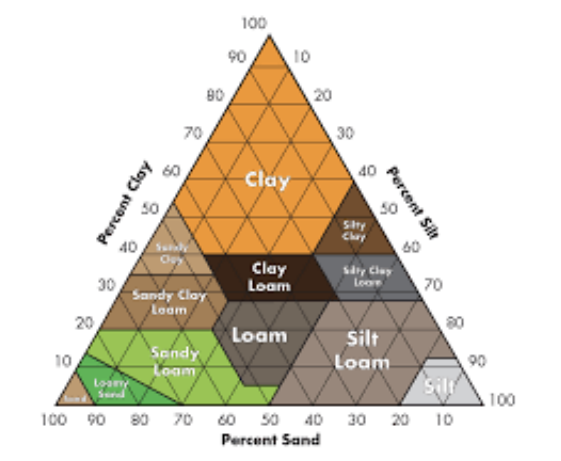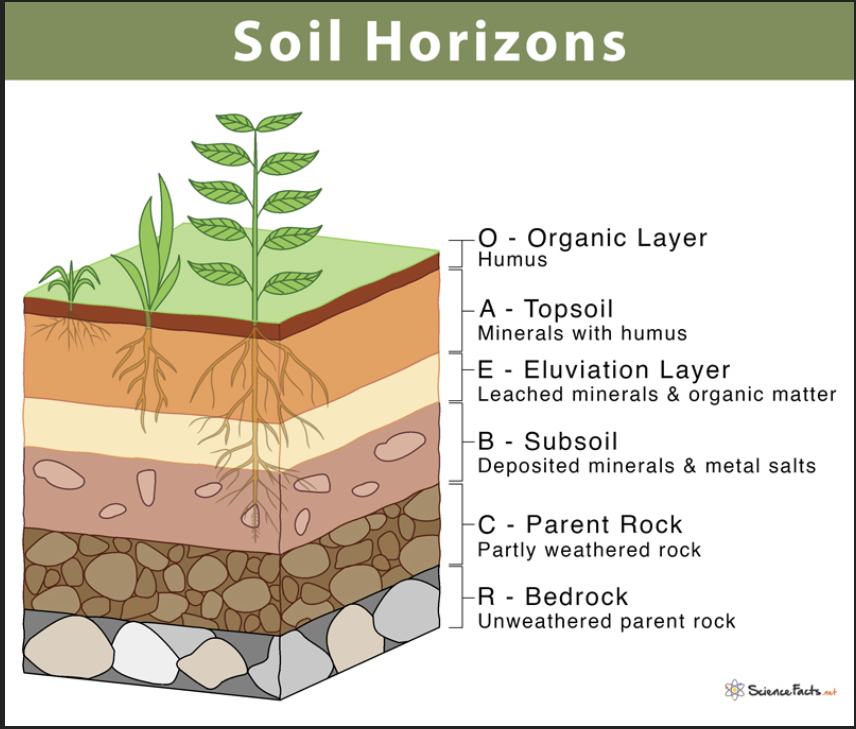APES Chapter 12 Study Guide
1/60
There's no tags or description
Looks like no tags are added yet.
Name | Mastery | Learn | Test | Matching | Spaced |
|---|
No study sessions yet.
61 Terms
The 17 UN Sustainable Development Goals
Zero hunger, good health, climate action, responsible consumption, no poverty, clean water, decent work, reduce inequalities, life below waters, life on land, quality of of life, equal gender, education, cities, partnerships
Six Major Ways of Agriculture
A. Halting ecological succession: Agriculture prevents natural progression to a stable ecosystem (like a forest) by repeatedly resetting the landscape to maintain early successional stages for crop production.
B. Monocultures: singular species crop land
C. Rows: Crops planted in neat lines
D. Simplification: Agro-ecosystems are simple
E. Plowing: Mechanical turning and breaking up of soil to plant.
F. Genetic Modification: Genetic changes in DNA
Which biomes have been most impacted by large-scale agriculture?
Temperate grasslands and tropical forests.
Describe two characteristics of “Traditional farming”:
Limited technology and inputs, uses traditional knowledge
Though it may go without saying, how does social instability influence agriculture and food production?
Differences in food security, labor, distribution of farming can determine the types of agriculture
Describe three potential drawbacks of international food-aid:
Money, transportation, lowers price of food
One major factor that many demographers, agricultural economists, and ecologists see as currently* being the key to food production:
Yeild
Marasmus and Kwashiorkor
Marasmus- overall low calorie intake
Kwashiorkor- Low nutrient intake like low protein
Identify two major types of/categories of malnutrition in the United States:
Undernutrition (not getting the proper nutrients)
Overnutrition (over eating excess amount of calories and nutrition.)
According to the Centers for Disease Control, how many Americans live in food deserts?
19 million 6.5% of the population
Food desert: geographic area where residents have limited access to affordable and nutritious food
“the Big Four”
Wheat, corn, rice, potatoes
Describe two advantages and two disadvantages of aquaculture:
Pro: Food production, economic growth
Con: environmental degradation, resource depletion
Describe one example of industrial ecology (a resource exchange web), where “waste = food”
Growing Power Farm uses the waste from fish to fertilize plants and cycle the water.
Will McDonough from The Next Industrial Revolution
The Next Industrial Revolution, a concept that reimagines production systems to prioritize sustainability, efficiency, and harmony with the environment. McDonough, an architect and designer, collaborates with chemist Michael Braungart to advocate for the cradle-to-cradle design philosophy.
Describe Liebig’s law of the minimum
the growth or productivity of an organism or ecosystem is determined by the most limiting factor in its environment
Provide three examples of plant macronutrients and three examples of plant Micronutrients
macro: nitrogen, potassium, phosphorus
micro: iron, zinc, magnesium
Describe the major characteristics of the First Green Revolution
WW2, increase use of synthetic pesticides like DDT, inorganic fertilizers, mechanical trucks, irrigation, monoculture
Describe the major characteristics of the Second Green Revolution
1970, developing nations, rainfall, GMOs dwarf rice and wheat
Interplanting
simultaneously grow several crops on the same plot of land
Polyvarietal Cultivation
plot planted with several varieties of the same crop
Intercropping
2+ different crops grown at same time on a plot
Agroforestry: synonymous with alley cropping
non-woody food crops and trees planted together
Polyculture
a more complex form of intercropping in which many different plants maturing at various times are planted together
Bush fallow
A form of slash-n-burn ag., with a cultivation period of typically 1-3 years, followed by a longer fallow period (not using the land for a period of time) ; (Central & West Africa, India)
What is milpa agriculture?
often incorporating polycultural methods- multiple crops are grown simultaneously on the same plot of land, typically in a rotational system (Central America)
What is swidden agriculture?
also known as fire-fallow cultivation- clearing land for farming by cutting down vegetation and then burning it to prepare the soil; (Latin America, Central Africa, Southeast Asia)
Describe three ways to improve irrigation of agricultural crops
Drip irrigation, parenial plants, soil moisture monitoring
Three categorical food production systems
1. Croplands
2. Rangelands / Pastures /Feedlots / CAFOs
3. Fisheries/Aquaculture
three potential benefits / advantages, and three potential costs / disadvantages of Organic Farming / Agriculture (from pre-planting, environmental health, “in- field”/ growing stages, harvest, the marketplace, consumer health)
Pros: high profits, less environmental impact, yields the same
Cons: needs to be monitors, more money, more labor
Stuart Oda: Are Indoor Vertical Farms the Future of Agriculture?
Stuart Oda's TED Talk discusses the potential of indoor vertical farming as a solution to modern agricultural challenges. He highlights its ability to provide fresh, sustainable food with minimal space and water usage, addressing concerns such as food security, urbanization, and climate change. Oda emphasizes the scalability of vertical farms in urban areas and their ability to grow crops year-round, independent of weather conditions. He also touches on technological advancements that make these farms more efficient.
Dirt! The Movie – Dirt! The Movie
documentary that explores the critical role soil plays in our ecosystem and the ways humans interact with it. It highlights how our relationship with dirt impacts the environment, food production, and overall life on Earth. Featuring voices like Jamie Lee Curtis and Vandana Shiva, it calls for a renewed connection with the earth beneath us.
Will Allen
is a prominent urban farming advocate, particularly known for his work with Growing Power in Milwaukee. He emphasizes the importance of urban farming as a means of fostering community, improving food security, and promoting sustainability. In interviews, he often discusses his work in transforming urban spaces into productive farms, bringing fresh food to underserved areas.
Benefits (advantages) and Costs (disadvantages) of Concentrated Animal Feeding Operations(CAFOs)
Pros: Protects bio, profits decrease need or grazing and soil erosion, production is increased
Cons: alot of methane and gases, antibiotic resistance, waste, feedlots take up room
Define / describe Desertification and propose three Potential Prevention Methods;
When the potential yield of a plot of land goes down; reforestation, sustainable farming practice(crop rotation, poly culture, etc), water management
Briefly describe Sheet, Rill, and Gully
Sheet- thin layer
Rill- tiny streams (rivulets)
Gully- Erosion large streams (gullies)
HOW do we cause Soil Salinization?
irrigation -> brings salt minerals to the surface -> drys and leaves a layer on top of the soil; build up of nutrients
Propose TWO methods of dealing with Salinized Soil
Leaching: Flooding the soil with water to wash away excess salts.
Soil Amendments: Adding organic matter or gypsum to improve soil structure and reduce salt concentration.
Contrast First- and Second- Generation Pesticides & provide two examples of each
1st: natural: nicotine, Pyrethrins
2nd: synthetic: DDT, Chlorpyrifo
Advantages of Second-Generation / Synthetic Pesticides
More effective, cost effective, target action (more narrow spectrum)
Disadvantages of Second-Generation / Synthetic Pesticides:
Envi impact, genetic resistance, health risks
The “Perfect Pesticide”? Prominent Characteristics
Natural, narrow spectrum, cheap, can degrade easily
The Circle of Poison
the practice where pesticides banned in industrialized countries are exported to developing nations, used on crops, and then those same crops are imported back into the original countries, potentially bringing toxic residues with them
Alternatives to Synthetic Pesticides
IPM, natural pesticides, organic farming, cultural practice
IPM = ? What the Goal of an IPM Program IS and what the Goal is
Integrated Pest management: To manage pest populations in an environmentally responsible way, using a combination of biological, cultural, physical, and chemical methods. The emphasis is on reducing pest damage while minimizing the impact on the environment, human health, and non-target organisms.
Explain how the extensive use of synthetic inorganic chemical fertilizers in the upper Midwest of the United States has impacted aquatic biodiversity in the greater Gulf of Mexico aquatic life zone;
eutrophication
What are the major limits to expanding the current Green Revolution (Green Revolutions as we know them up to this point)?
Environmental degradation, climate change, decrease effect of pesticides and fertilizers, economic, biodiversity loss
(how to interpret) the Soil Texture Triangle
Sand: The largest soil particles (0.05 mm – 2 mm), which provide good drainage and aeration but low nutrient retention.
Silt: Medium-sized particles (0.002 mm – 0.05 mm), which retain moisture and nutrients but are prone to compaction.
Clay: The smallest soil particles (less than 0.002 mm), which hold moisture and nutrients but have poor drainage.

Soil Triangle: 30-20-50
A soil mixture of 30% clay, 20% silt, and 50% sand- Sandy Clay Loam
Majoy Factors of Soil
Time, kind of rock, nutrient holding capacity, clay
Soil particles small to big
clay, silt, sand
Perennials vs Annuals
Long lasting plants (orchards) vs Seasonal plants (corn)
IPM methods
vaccuming, hot water, soap, radiation
Polar grasslands
methane, permafrost
Soil Porosity vs Permiability
Permiability is rate and time while Porosity is the hole-i-ness
Humus
really good at holding onto water (water fertility)
Soil Horizon
O Horizon (Organic Layer):
Composed mainly of decomposed organic matter (leaves, plant debris, and humus).
Found at the surface in forested or undisturbed areas.
Rich in nutrients and critical for plant growth.
A Horizon (Topsoil):
A mixture of minerals and organic material, forming the most fertile soil layer.
Darker in color due to high organic content.
Essential for agriculture and plant root systems.
E Horizon (Eluviation Layer):
Found beneath the A horizon in some soils.
Characterized by the loss of minerals and organic matter (leaching), leaving behind lighter-colored materials like sand or silt.
Common in acidic soils.
B Horizon (Subsoil):
Accumulation zone for minerals and nutrients leached from the upper horizons (illuviation).
Rich in clay, iron, and aluminum compounds, giving it a denser texture.
Lacks organic material compared to the A horizon.
C Horizon (Parent Material):
Composed of weathered rock fragments or unconsolidated material from which the soil develops.
Minimal organic content and biological activity.
Represents the transition between soil and bedrock.
R Horizon (Bedrock):
Solid, unweathered rock layer beneath the soil profile.
Provides the parent material for soil formation but is not part of the active soil.

Alternative to synthetic pestisides
natural predators, sex attractants, ecological control, cultivation
Soil conservation tactics
Terracing, contour planting, strip planting, intercropping, windbreaks
Regulating Aquaculture
regulations (limit catches), Economic (subsidies), protect certain areas, consumer (label certified), by catch (net hatch), ballast water checks
Open ocean aquaculture
raising large carnivore fish on land rather near the shore, reduces escapees, polltuion, protection of mangroves and esturaries, improve management of wastes
ASC
Aquaculture Stewardship Council